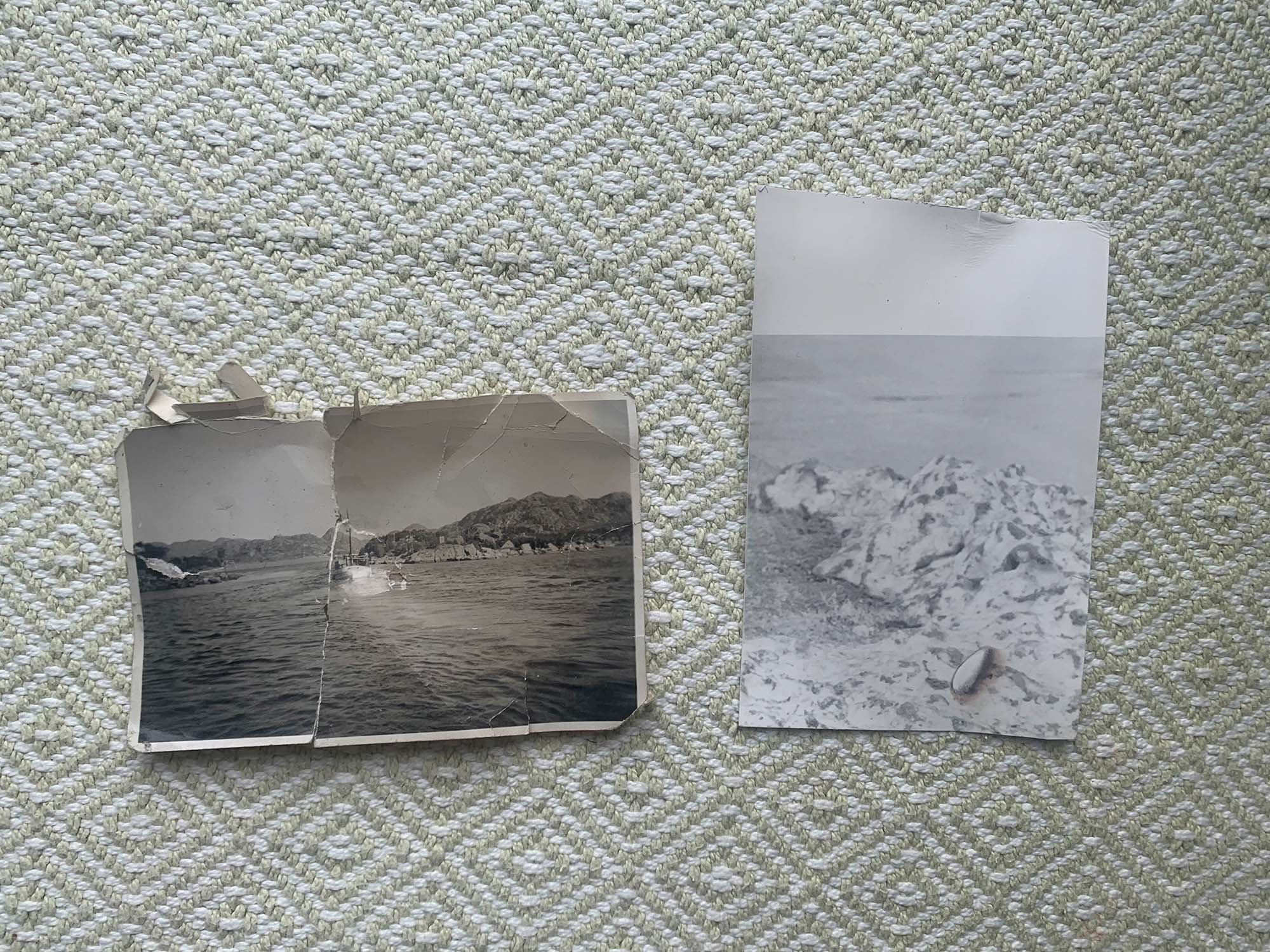Jag är ny på denna ö (återigen)
2021
Papper, bokträ, bläckstråleutskrifter,
Xerox-tryck, fotografi från 1947, lera blandad med alger
Varierande storlekar
Mercè Torres Ràfols konstnärskap är processbaserat. I Jag är ny på denna ö (återigen) försöker konstnären kommunicera med människor genom att lära sig deras språk och uppfinner nya språktecken för att sätta sig själv, hennes identitet och hennes minnen i förbindelse med öns historia: genom stenar och gamla språkmanualer gjorda speciellt för fiskare, genom de färdigheter och redskap som hör till fisket och genom det som finns i havsdjupen. Att lära sig ett språk blir för Mercé till en fysisk ansträngning, en abstraktion, som att se tillbaka på ett trasigt fotografi. Det kan också översättas till hur tillhörighet både är desperat eftersträvat och omöjligt och ändå kan nya språk utvecklas.
“I installationen Jag är ny på denna ö (återigen) går jag igenom en ordbok använd för att lära ut engelska till fiskare på trettiotalet. Några anteckningar gjorda av en fiskare som hette Lars blandas med de jag gjorde medan jag försökte göra mig förstådd eller kunna förstå. Skulpturer av lera och alger påminner om världen under ytan och de ting som gått förlorade.”
(Mercè Torres Ràfols)
Biografi
Mercè Torres Ràfols föddes i Katalonien 1995. Hon bor och arbetar i Göteborg. Ràfols arbetar främst med fotografi I skärningspunkten med andra material såsom text, keramik och upphittade objekt. Hon intresserar sig för frågor som rör arv, plats och tradition – hur kunskap förs vidare och hur vi kan förstå något på nytt. Ràfols ställer dessa frågor i en specifik omgivning, och undersöker hur en plats har fått laddning över tid av samhället.
Provokation
Structured around the theme of the city as a machinery of the present time, Comforting the machine synthesised and gave its audience a tight and poignant grasp of truths in the raw. In preparation for the exhibition, the ten artists were also invited to submit something the curators called “Provocations”. The provocation to each artist was a task to expand themselves beyond the walls of the gallery by mapping traces of their work in the region, in history and the future, and to collate them as a string of continuations.
Provokation bilder
Provokation text (engelska)
Geography of the possible
This place begins with poetry:
Jag vet en väg som leder hem
Den vägen är kal och ren
Den är som att luta sin varma kind
Mot obarmhärtig sten
*Karin Boye
The stones hold my weight, erode under my path. The ants and I are looking for the same crevices, making a den where to store finds.
Renegotiating and rebuilding the experience of being at home in the country of arrival, when one has never been from here nor from there, is renegotiating what one represents (the backpack) and what it is (the living though). I’m from where my body is. I’m from here now. On top of this stone. I look at the horizon without waiting for a return nor a departure. They say that exile is preached in the absence, but also in the existence of a place of origin and this place must always be carried on, like a snail that carries a house that is used in case of emergency (watching bread rise in a clear vessel).
Once you have learned English, in the faith of internationality: to be able to ”go”, one is left floating in a nebula of being from nowhere, only being able to communicate with those who choose this semi-common state, the verbal and written understanding. Neither where I come from nor where I am, English is the common language, and I would like to understand it as a tool, not as a method. Maybe because of coming from a divided nationality, exile has meant a relief, a national discharge, left out in the nowhere with the possibility to determine what customs to keep and what to adopt as new. But to be from here, one has to be born in place, so I welcome this continuous state of interpretation, trying to build collective and local identifications.



